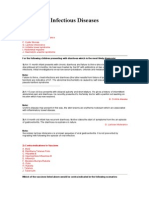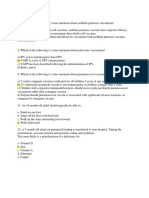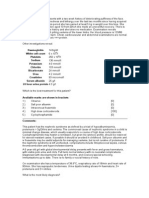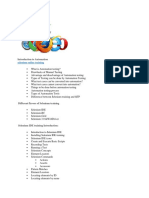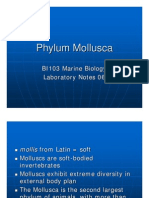Endocrine Emq
Endocrine Emq
Uploaded by
frabziCopyright:
Available Formats
Endocrine Emq
Endocrine Emq
Uploaded by
frabziOriginal Description:
Copyright
Available Formats
Share this document
Did you find this document useful?
Is this content inappropriate?
Copyright:
Available Formats
Endocrine Emq
Endocrine Emq
Uploaded by
frabziCopyright:
Available Formats
Endocrine
Theme : Endocrine A. Addison's disease B. Congenital adrenal hyperplasia C. Cushing's syndrome D. Diabetes insipidus E. Diabetes mellitus F. Hyperthyroidism G. Hypoparathyroidism H. Hypothyroidism I. Primary aldosteronism J. Septo-optic dysplasia Select the most likely diagnosis from the list above that would explain the presentations of the following patients: 1) An 11 year old boy who was previously fit and well presents to the GP with obesity and purple abdominal striae. His blood pressure is 140/90. C. Cushing's syndrome
2) A breast-fed baby presents with poor feeding. He has a hoarse voice and coarse facial features. Examination of the skull reveals wide sutures and a large anterior fontanelle.
J. Septo-optic dysplasia H. Hypothyroidism
3) A 7 year old girl with moderate learning difficulties presents with dry skin, alopecia and mucocutaneous candidiasis.
H. Hypothyroidism G. Hypoparathyroidism
Comments: Cushing's syndrome is a disorder due to high circulating cortisol levels either exogenous or endogenesis in origin. Clinical features include arrested growth, trunk obesity, hirsuitism, muscle wasting and mood changes. Purple striae are often seen. Laboratory investigations may reveal polycythaemia, abnormal glucose tolerance and high cortisol levels. 2-Congenital hypothyroidism is relatively common. Affected babies may have coarse facies, dry skin and a hoarse cry. Other features include hypotonia, umbilical hernia and constipation and prolonged jaundice. Blood tests reveal low T4 levels and a high TSH. In some infants brain development may be irreversibly damaged before birth however early detection may avoid permanent neurology sequelae. 3-Hypoparathyroidism in the neonatal period transient hypoparathyroidism occurs resulting in hypocalcaemia, possibly convulsions or apnoeic episodes. Hypoparathyroidism is rare. Features include headaches, vomiting, photophobia, cataracts, poor dentition and chronic diarrhoea. Investigations will
confirm low calcium and high phosphate levels. Theme : Endocrine A. Addison's disease B. Congenital adrenal hyperplasia C. Cushing's syndrome D. Diabetes insipidus E. Diabetes mellitus F. Hyperthyroidism G. Hypoparathyroidism H. Hypothyroidism I. Primary aldosteronism J. Septo-optic dysplasia Select the most likely diagnosis from the list above that would explain the presentations of the following patients: 1) A 14 year old girl presents with weight loss. She denies any dieting or use of laxatives. She also complains of polydipsia and has recently started wetting the bed. E. Diabetes mellitus
2) A 6 year old boy presents with fatigue and weight loss. He complains of abdominal pain and disturbed bowel habit. He is found to have a low blood sugar.
A. Addison's disease
3) A 6 month old baby with histiocytosis presents with vomiting weight loss and signs of dehydration.
D. Diabetes insipidus
Comments: 1-Diabetes mellitus results from insulin deficiency. Symptoms are characteristic and early features being polyuria, nocturnal enuresis, thirst, lethargy, weight loss and anorexia. Late symptoms include vomiting, abdominal pain and shock. 2-Addison's disease or adrenocortical failure has an auto-immune basis and may occur in association with other endocrine problems such as diabetes, hypoparathyroidism and thyroiditis. Clinical features include weakness, weight loss and increased pigmentation. Children may also have hypotension and hypoglycaemia. 3-Diabetes insipidus may be idiopathic or as a result of tumours, histiocytosis etc. It is due to a lack of anti-diuretic hormone and results in polyuria, polydipsia hypothermia, weight loss, constipation and poor growth. Treatment requires DDAVP.
You might also like
- Neonatology MCQDocument34 pagesNeonatology MCQNadeem Ur Rasool Sahibzada94% (32)
- Old Free 120 - Answers & Explanations (BW)Document17 pagesOld Free 120 - Answers & Explanations (BW)frabziNo ratings yet
- FC Paed (SA) Part I Past Papers - 2011 Sept 6-4-2014Document8 pagesFC Paed (SA) Part I Past Papers - 2011 Sept 6-4-2014matenten0% (1)
- Nephrology MCQ PDFDocument7 pagesNephrology MCQ PDFreenarachelgeorge100% (4)
- Content Management System Project ReportDocument65 pagesContent Management System Project ReportHarit Soni88% (8)
- Collectors Investments: South Africa Coin ListDocument5 pagesCollectors Investments: South Africa Coin ListbelebelNo ratings yet
- MCWP+3 01+Offensive+and+Defensive+TacticsDocument434 pagesMCWP+3 01+Offensive+and+Defensive+TacticsElkin Villalobos100% (1)
- 2005 FRACP Written Examination Paediatrics & ChildDocument30 pages2005 FRACP Written Examination Paediatrics & ChildMedicEdNo ratings yet
- Paediatrics MCQsDocument5 pagesPaediatrics MCQsbalarajuuk100% (1)
- Hematology EMQDocument7 pagesHematology EMQfrabzi100% (1)
- Gastroenterology MCQDocument88 pagesGastroenterology MCQAtawna Atef86% (7)
- American Literature: Lecture OneDocument27 pagesAmerican Literature: Lecture OneLiza Salvador VillanuevaNo ratings yet
- Bawasig Pediatric ExamDocument20 pagesBawasig Pediatric Examخلدون سليمNo ratings yet
- Gastroenterology Best RDocument23 pagesGastroenterology Best RfrabziNo ratings yet
- Endocrinology Best RDocument27 pagesEndocrinology Best RfrabziNo ratings yet
- وتين ٦Document29 pagesوتين ٦Mohammad AlrefaiNo ratings yet
- MCQS IdDocument24 pagesMCQS IdWaleed SofiNo ratings yet
- Osce PG 1Document18 pagesOsce PG 1Mobin Ur Rehman Khan100% (1)
- Remaining Pediatric Pearls..Document17 pagesRemaining Pediatric Pearls..Mobin Ur Rehman Khan100% (1)
- USMLE Step 1 2004 Jjs PDFDocument126 pagesUSMLE Step 1 2004 Jjs PDFCaribPirate100% (1)
- Cardiology EmqDocument8 pagesCardiology EmqislamawniNo ratings yet
- Paediatrics SbaDocument34 pagesPaediatrics SbaAhmad Syahmi YZ100% (1)
- Pediatrics MCQs - DR Ranjan Singh - Part 2Document10 pagesPediatrics MCQs - DR Ranjan Singh - Part 2k sagarNo ratings yet
- Pedia+smiley Block7Document7 pagesPedia+smiley Block7tej0331No ratings yet
- Pediatrics AnswersDocument28 pagesPediatrics Answersjaini_patel23No ratings yet
- FCPS 2 Feb 2021 EveningDocument17 pagesFCPS 2 Feb 2021 EveningSara KhanNo ratings yet
- Pediatric 6th Year 2016Document30 pagesPediatric 6th Year 2016motasem alsharifNo ratings yet
- FC Paed (SA) Part II Past Papers - 2013 1st Semester 8-4-2014Document5 pagesFC Paed (SA) Part II Past Papers - 2013 1st Semester 8-4-2014matentenNo ratings yet
- Tutorial: Section A: Multiple Choice Question (Mcqs T/F)Document7 pagesTutorial: Section A: Multiple Choice Question (Mcqs T/F)Harith AsriNo ratings yet
- B) Meningococcal MeningitisDocument7 pagesB) Meningococcal MeningitisWe'am QutubNo ratings yet
- Question Bank For Mbbs Pediatrics: Long Essay - 20 MarksDocument17 pagesQuestion Bank For Mbbs Pediatrics: Long Essay - 20 MarkspolluNo ratings yet
- Infectious Diseases EmqDocument24 pagesInfectious Diseases Emqfrabzi100% (1)
- Self-Assessment Questions, Group 6Document20 pagesSelf-Assessment Questions, Group 6naveenkovalNo ratings yet
- Pedia ReviewDocument22 pagesPedia ReviewDebbie LanceroNo ratings yet
- Filename: AMC PEDIATRICS 2005 To 2009 PDFDocument38 pagesFilename: AMC PEDIATRICS 2005 To 2009 PDFZahid QamarNo ratings yet
- 1 - Arab Board - Primary Exam 2010Document24 pages1 - Arab Board - Primary Exam 2010Ahmed LasheenNo ratings yet
- Hematolgy Best ResponsDocument12 pagesHematolgy Best ResponsfrabziNo ratings yet
- Nov 2018Document84 pagesNov 2018Ayoub CHAKIRNo ratings yet
- In Pediatrics: Zuhair M. AlmusawiDocument22 pagesIn Pediatrics: Zuhair M. AlmusawiAseel AliNo ratings yet
- Imle A 03 03 2015Document82 pagesImle A 03 03 2015Moataz TrabehNo ratings yet
- Osce Pune Mock Osce 2012Document53 pagesOsce Pune Mock Osce 2012SALAMANDER MUGIWARANo ratings yet
- Model Toacs 1Document115 pagesModel Toacs 1Sana Bushra100% (2)
- Dermatology: Questions & AnswersDocument26 pagesDermatology: Questions & AnswersDev YadavNo ratings yet
- Sep 2018Document91 pagesSep 2018Ayoub CHAKIRNo ratings yet
- Gynaecology MCQsDocument19 pagesGynaecology MCQssimi yNo ratings yet
- 4 5820951304909882278 PDFDocument386 pages4 5820951304909882278 PDFMohamed HamoodNo ratings yet
- Me219 - Haemato CaDocument21 pagesMe219 - Haemato CaAbby LiewNo ratings yet
- 2005 FRACP Written Examination Paediatrics & ChildDocument63 pages2005 FRACP Written Examination Paediatrics & ChildMedicEdNo ratings yet
- Pediatrics MCQs - DR Ranjan Singh - Part 1Document10 pagesPediatrics MCQs - DR Ranjan Singh - Part 1k sagarNo ratings yet
- MRCP 1 TestDocument261 pagesMRCP 1 TestMohamed Amr Salama100% (2)
- 03.cleveland Clinic of Pediatrics - Selected Questions PDFDocument17 pages03.cleveland Clinic of Pediatrics - Selected Questions PDFLakshaya SinghNo ratings yet
- Surgery FinalADocument102 pagesSurgery FinalAvaegmundig100% (1)
- Pedes McqsDocument16 pagesPedes McqsSyeda Aroosa Abbas Naqvi100% (1)
- Bonus Paeds MCQs With ExplanationsDocument17 pagesBonus Paeds MCQs With ExplanationsSsNo ratings yet
- Pediatrics MCQ of The Day-November, 2008Document13 pagesPediatrics MCQ of The Day-November, 2008Mohammad Salem100% (1)
- Paediatric Q & ADocument47 pagesPaediatric Q & AHafizuddin RazidNo ratings yet
- Newborn MCQDocument58 pagesNewborn MCQعبدالرحمن بشير100% (2)
- Paediatrics and Child Health Practice Exam Questions and AnsweDocument16 pagesPaediatrics and Child Health Practice Exam Questions and AnsweGirmaNo ratings yet
- اسئله اطفال مدفقه 740804Document39 pagesاسئله اطفال مدفقه 740804Ashraf AlbhlaNo ratings yet
- Amc Pediatrics 2005 To 2009Document37 pagesAmc Pediatrics 2005 To 2009florettyNo ratings yet
- Pedia 100q.Document11 pagesPedia 100q.John Christopher Luces100% (1)
- PediatricsDocument3 pagesPediatricsrocksunNo ratings yet
- Gynae UM Paper 2Document16 pagesGynae UM Paper 2Muhammad Abbas AliNo ratings yet
- Soal MCQ Endokrin Ep2022Document31 pagesSoal MCQ Endokrin Ep2022Ike Wahyu TriastutiNo ratings yet
- MSQ Base 6 Year PDFDocument71 pagesMSQ Base 6 Year PDFAtul KumarNo ratings yet
- C. Babbles Using Vowel SoundsDocument10 pagesC. Babbles Using Vowel SoundsNicholasNo ratings yet
- КRОК 2 explained pedDocument41 pagesКRОК 2 explained pedAimeeNo ratings yet
- New Free 120 - Answers & Explanations (BW)Document14 pagesNew Free 120 - Answers & Explanations (BW)frabziNo ratings yet
- Cognitive Behavioral Play THDocument7 pagesCognitive Behavioral Play THfrabziNo ratings yet
- Calculating Your Per Pay Period Costs: Monthly Rates and Health Care Comparison 2014Document2 pagesCalculating Your Per Pay Period Costs: Monthly Rates and Health Care Comparison 2014frabziNo ratings yet
- Development MCQDocument4 pagesDevelopment MCQv_vijayakanth7656No ratings yet
- Cardiology EmqDocument8 pagesCardiology EmqDenosshan SriNo ratings yet
- Cardiology Best RDocument11 pagesCardiology Best RislamawniNo ratings yet
- Endocrine MCQDocument51 pagesEndocrine MCQMayyada ShihadaNo ratings yet
- Cardiology MCQDocument36 pagesCardiology MCQSobia AhmedNo ratings yet
- Hematolgy Best ResponsDocument12 pagesHematolgy Best ResponsfrabziNo ratings yet
- Infectious Diseases MCQDocument34 pagesInfectious Diseases MCQfrabziNo ratings yet
- Nephrology Best RDocument6 pagesNephrology Best Rfrabzi100% (1)
- Infectious Diseases EmqDocument24 pagesInfectious Diseases Emqfrabzi100% (1)
- Pediatrecs EmqDocument40 pagesPediatrecs Emqv_vijayakanth7656No ratings yet
- Neurology MCQDocument16 pagesNeurology MCQSudhakar Subramanian100% (1)
- Respiratory Best RDocument5 pagesRespiratory Best RfrabziNo ratings yet
- Paediatrics Best RDocument21 pagesPaediatrics Best RfrabziNo ratings yet
- Unassigned MCQDocument9 pagesUnassigned MCQfrabziNo ratings yet
- Pediatrics MCQDocument133 pagesPediatrics MCQfrabzi100% (2)
- Printer Friendly View PackDocument76 pagesPrinter Friendly View PackfrabziNo ratings yet
- QAQC MONTHLY Slides For TRC SRUS - 07.12.2020 Zaki Check-AmniDocument16 pagesQAQC MONTHLY Slides For TRC SRUS - 07.12.2020 Zaki Check-AmniShahrul Azwan100% (2)
- Gingivitis Vs PeriodontitisDocument2 pagesGingivitis Vs Periodontitisandreas kevinNo ratings yet
- Chapter - 5. Factorization of Algebraic ExpressionsDocument36 pagesChapter - 5. Factorization of Algebraic ExpressionsAnkit LadhaNo ratings yet
- ĐỀ THI HSG 10 tháng 4-2022Document7 pagesĐỀ THI HSG 10 tháng 4-2022thu uyên trầnNo ratings yet
- 00 Robotics F16MTE PLO CLO IntroductionDocument14 pages00 Robotics F16MTE PLO CLO IntroductionasadNo ratings yet
- Final Proposal Residential Online BookinDocument16 pagesFinal Proposal Residential Online Bookinelizabeth michaelsNo ratings yet
- CVDocument1 pageCVErik AndersonNo ratings yet
- Selenium and WebdriverDocument9 pagesSelenium and WebdriverSangeetha BcNo ratings yet
- 10 Things Your Mechanic Won't Tell You - Yahoo! Autos Article PageDocument4 pages10 Things Your Mechanic Won't Tell You - Yahoo! Autos Article PageAusNo ratings yet
- Jurnal Case Control 1Document7 pagesJurnal Case Control 1Linda MarcelaNo ratings yet
- P79 MBA Home Assignment 2021-2022 Sem IDocument5 pagesP79 MBA Home Assignment 2021-2022 Sem IAnil TekaleNo ratings yet
- Levi's & Calvin KleinDocument19 pagesLevi's & Calvin Kleinzayana kadeejaNo ratings yet
- Eplan - Atualizar Macros Eplan 2022 Centro de InserçãoDocument2 pagesEplan - Atualizar Macros Eplan 2022 Centro de Inserçãoheltonsouza247No ratings yet
- Examen Sansa A DouaDocument14 pagesExamen Sansa A Douaelenapet1No ratings yet
- Agricultural TenancyDocument20 pagesAgricultural TenancyJel LyNo ratings yet
- RaviDocument2 pagesRaviPoorna KalandharNo ratings yet
- Brochure Simatic Wincc v72 enDocument8 pagesBrochure Simatic Wincc v72 enjeanfmirandaNo ratings yet
- Lecture 22CAs20Document29 pagesLecture 22CAs20mzNo ratings yet
- El-Fekkak, Badr - Justice As Divine Providence in Al-FarabiDocument20 pagesEl-Fekkak, Badr - Justice As Divine Providence in Al-FarabiJonathan DubéNo ratings yet
- POQ MGMTDocument53 pagesPOQ MGMTAruna FeltzNo ratings yet
- Tajweed English Full Pack Master SheetDocument4 pagesTajweed English Full Pack Master Sheetmaryamhassansaleh4949No ratings yet
- High Flow Nasal Oxygen PDFDocument26 pagesHigh Flow Nasal Oxygen PDFGulshan kumarNo ratings yet
- Lottery Business Plan TemplateDocument5 pagesLottery Business Plan Templatehirnsubie100% (1)
- Post Test - CD - Ms. Jaidee RojasDocument2 pagesPost Test - CD - Ms. Jaidee RojasDebra SalazarNo ratings yet
- Job Analysis and Job Design: Managing Human ResourcesDocument58 pagesJob Analysis and Job Design: Managing Human ResourcesAhmed Al-aminNo ratings yet
- BI103 Lab 06 - Phylum MolluscaDocument78 pagesBI103 Lab 06 - Phylum MolluscaJalu PrianggodoNo ratings yet































